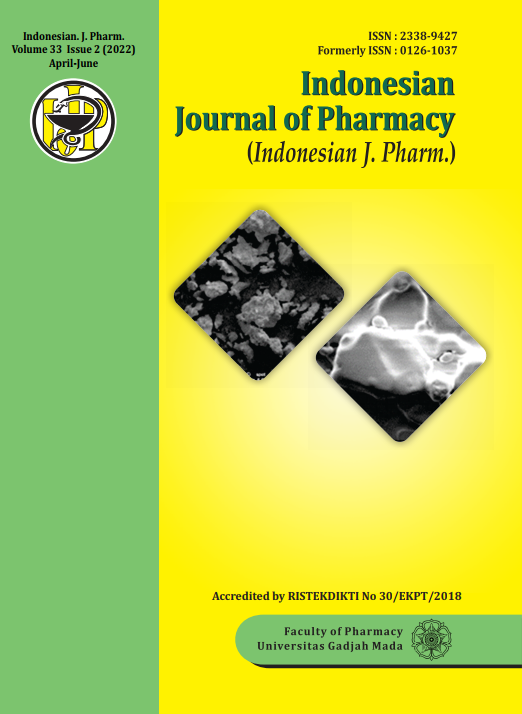Chemical composition of Bryophyllum pinnatum (Lam.) Oken
Abstract
Natural chemicals with medicinal qualities are an endless source of chemical molecules, making them a valuable source of pharmacologically active molecules. Humans have always looked for these plants, not only for food but also for medicinal purposes. Bryophyllum pinnatum is a succulent perennial herb native to Africa and Asia. The plants is traditionally used in northern Nigeria for the treatment and management of various ailments. To date, no studies have been carried out on the chemical composition of B. pinnatum in Northern, Nigeria. The study examine the chemical composition of B. pinnatum leaves in Northern, Nigeria. Hydrodistillation was used to extract the essential oil using three different solvents (dichloromethane, hexane and hexane-acetone). The chemical composition of the essential was identified with Gas chromatography coupled with mass spectrometry. Thirty five compounds were identified from the essential oil extracted with dichloromethane, twenty five compounds from the essential oil extracted with hexane and twenty three compounds from essential oil extracted hexane-acetone. But the three solvents were found to be dominant by Bis(2-ethylhexyl) phthalate. The study provides the first chemical composition of B. Pinnatum which can be fully utilised industry and pharmaceutical companies. Further studies is needed to ascertain the pharmacological and industrial usage of each identified compound.
References
Abdulrahman, M. D., Ali, A. M., Fatihah, H., Khandaker, M. M., & Mat, N. (2018). b. Morphological and anatomical Studies of Syzygium polyanthum (Wight) Walp.(Myrtaceae). Mal. Nat. J, 70(3), 309-322.
Abdulrahman, M. D., Ali, A. M., Khandaker, M. M., Fatihah, H. N. N., & Mat, N. (2018). Discrimination of Syzygium Polyanthum (Wight) Walp. Cultivars Based On ATR-FTIR Spectroscopy. BIOSCIENCE RESEARCH, 15(4), 3622-3633.
Dike, I., & Obembe, O. (2012). Towards conservation of Nigerian medicinal plants. Journal of Medicinal Plants Research, 6(19), 3517-3521.
Dogara, A., Labaran, I., Hamad, S. W., Lema, A. A., & Jakada, B. H. (2021). Traditional Medicinal plants Used for the Treatment of Cancer in Mubi, Adamawa State, Nigeria. Al-Qadisiyah Journal Of Pure Science, 26(4), 258-268.
Kamboj, A., & Saluja, A. (2009). Bryophyllum pinnatum (Lam.) Kurz.: phytochemical and pharmacological profile: a review. Pharmacognosy Reviews, 3(6), 364.
Mahmoud, A. D., Ali, A. M., Khandaker, M. M., Fatihah, H. N. N., Awang, N. A., & Mat, N. (2019). Discrimination of Syzygium polyanthum Cultivars (Wight) Walp Based on Essential oil Composition. Journal of Agrobiotechnology, 10(1).
Mahmoud, A. D., Labaran, I., & Yunusa, A. (2020). Ethnobotany of medicinal plants with antimalarial potential in Northern Nigeria. Ethnobotany Research and Applications, 19, 1-8.
Nafiu, M., Hamid, A., Muritala, H., & Adeyemi, S. (2017). Preparation, standardization, and quality control of medicinal plants in Africa. Medicinal spices and vegetables from africa, 171-204.
Nagaratna, A., & Hegde, P. L. (2015). A comprehensive review on Parnabeeja [Bryophyllum pinnatum (Lam.) Oken]. J med plants stud, 3(5), 166-171.
Tatsimo, S. J. N., de Dieu Tamokou, J., Havyarimana, L., Csupor, D., Forgo, P., Hohmann, J., . . . Tane, P. (2012). Antimicrobial and antioxidant activity of kaempferol rhamnoside derivatives from Bryophyllum pinnatum. BMC Research notes, 5(1), 1-6.








